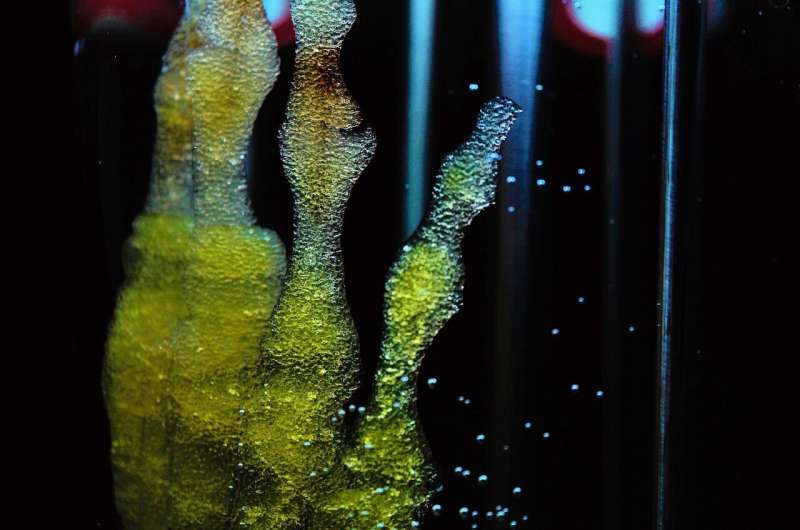Imagine if you could repair damaged tissue in your organs. That is what stem cell research is working towards, because stem cells have tremendous potential to produce the cells of organs such as the liver, pancreas and intestine.
For decades, scientists have attempted to mimic the path that stem cells follow in order to form, for example, organs in embryos. However, despite extensive efforts, getting cells to properly develop in the lab has been very difficult. But they may have overlooked an important step and maybe missing another type of stem cells, suggests a new study from the University of Copenhagen.
"Very simply put, a number of recent studies have attempted make a gut from stem cells in a dish. We have found a new way to do this, a way which follows different aspects of what happens in the embryo. Here, we found a new route that the embryo uses, and we describe the intermediate stage that different types of stem cells could use to make the gut and other organs," says Ph.D. student at Martin Proks, one of the primary authors of the study from Novo Nordisk Foundation Center for Stem Cell Medicine at the University of Copenhagen (reNEW).
The researchers looked at so-called pluripotent stem cells and endoderm extra-embryonic stem cells. Extra-embryonic endoderm cells are a new stem cell line that the same research team described a couple of years back. They contribute to the gut organs by being important support cells that provide membranes, nourishment for the membranes and more.
Group Leader and Professor Joshua Brickman at reNEW explains, "We have identified an alternative route that so-called extra-embryonic cells can use to make intestinal organs in the embryo. We then took our extra-embryonic endoderm stem cells and developed them into intestinal organ-like structures in the dish.
"But until the very recent past, people assumed these cells helped the embryo to develop and then they're gone. That they do not have anything to do with your body. So in this paper, we discovered that if we steer these support cells through this new alternative route, they would actually form organoid structures," says Joshua Brickman on the findings, which were published in Nature Cell Biology.
Might improve laboratory grown cells
The researchers identified all the potential cells that were candidates to form organs associated with the digestive tract, such as liver, pancreas, lung, and intestine, based on labeling them with a genetic marker. This big data is hard to analyze and required innovative new approaches to analysis that were developed in collaboration with physical scientists at the Niels Bohr Institute.
"We then identified the genes being used in these cells. To facilitate this work, we developed a new computational tool to compare clusters of cells and used this both to compare cells within our own dataset and examine others," explains Associate Professor Ala Trusina at the Niels Bohr Instute.
In order to ask whether the alternative route could develop organ cell types in the lab, the researchers set about using a different type of stem cells. These stem cells, which were described earlier in the article, originate from a different part of the embryo than pluripotent stem cells, and they resemble the starting point for the second or alternative route of organ formation.
"We then used these stem cells to generate intestinal organ-like structures in a dish. The findings suggest that both routes could work. Using the alternative route might help laboratory grown cells form functional cells and treat and study disease," says Michaela Rothova, one of the other principle authors on the study.
It could prove an important discovery, as scientists for long have been trying to crack the code on how to develop stem cells into the correct cells needed for a specific treatment, or to test drugs or model a disease.
"We haven't quite gotten there in terms of function, and we have problems maturing these cells. So perhaps we can solve some of these problems by trying this alternative route or by combining the alternative route with the traditional route," concludes Joshua Brickman at reNEW.



Recommended Comments
There are no comments to display.
Join the conversation
You can post now and register later. If you have an account, sign in now to post with your account.
Note: Your post will require moderator approval before it will be visible.